|
Mark Lindquist was
contacted by William E. Jewell of
Historical Woods of America and given a special
piece of spalted tulip poplar wood from a tree that Thomas Jefferson
is said to have planted next
to his home in Monticello. From the wood, Lindquist made a vessel
called Monticello Bowl. |
|
MONTICELLO BOWL
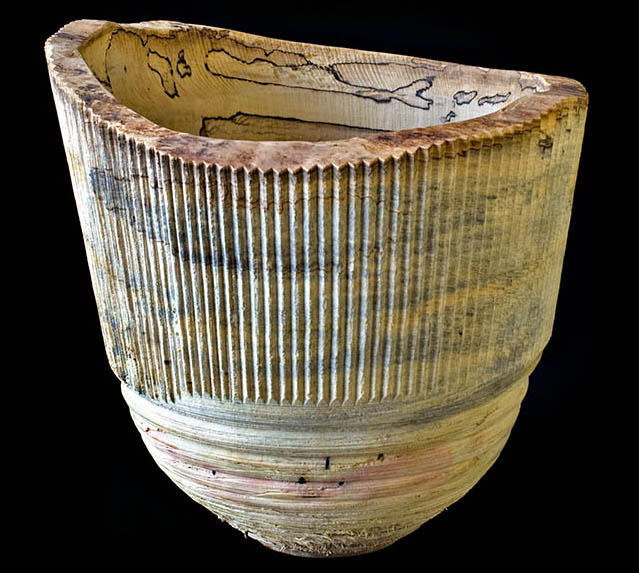
Mark Lindquist, MONTICELLO BOWL, Tulip Poplar from
Monticello, 12" H x 12" D, 2009
Copyright © 2009 Lindquist Studios - All Rights Reserved
Making Monticello Bowl
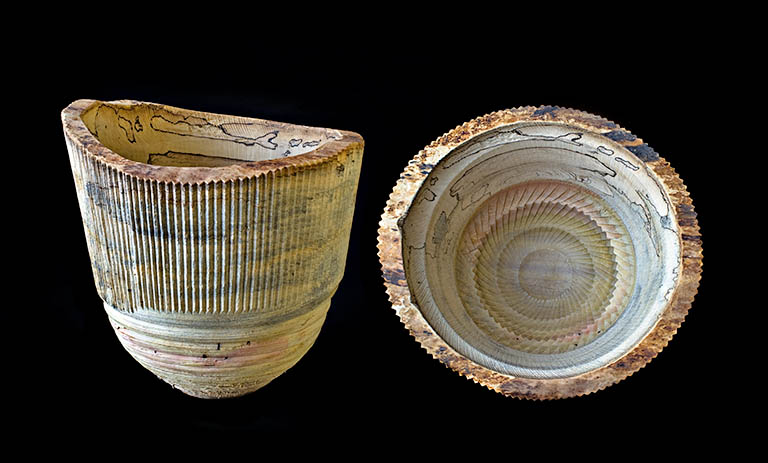
Photos:
Mark Lindquist -
©Lindquist
Studios 2009
Mark
Lindquist working at the lathe, Lindquist Studios, Quincy, FL
making Monticello Bowl, November, 2009
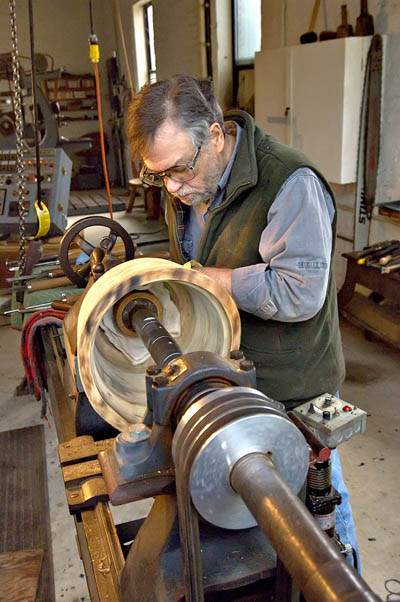
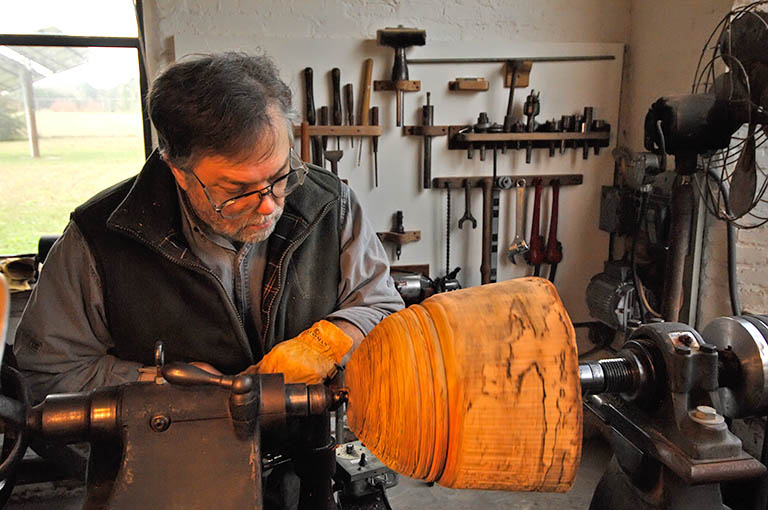
Photos of
Mark Lindquist by Spencer Bennett /
©Lindquist
Studios 2009
" When I received a block of tulip poplar wood from
the grounds of Thomas Jefferson's Monticello house, I began thinking
about Thomas Jefferson and the home he created at Monticello. From
this tree believed to have been planted by Jefferson himself, and
that he must have watched as it grew, I wanted to make something
that would pay homage to him and to Monticello. I imagined how
Monticello was at its beginnings and how the wood used to build it
was hand hewn and rough sawn. Also, I thought about Jefferson's
decision to add a dome to his house, and what it might have
symbolized to him. I wanted the interior of the bowl made from his
tree to give the viewer the same feeling of expansiveness and
freedom that you might experience looking up into the dome. In
using my robotic chainsaw lathe-turning technique, I pay homage to
Jefferson the inventor and, through the regular sawn patterns that
give an illusion of space and structure, to Jefferson the architect.
The black zone lines and pink, blue, and green colors in the wood
evoke early maps, like those Thomas Jefferson collected. These
graphic elements are displayed around the top interior of the bowl
in commemoration of the map collection that he displayed on the
walls of the Entrance Hall at Monticello. This bowl refers
back to the Ascending Bowl series I began in 1980. The lift of the
form and the vertical lines on the top of the exterior symbolize the
ascension of the human spirit. It has been a moving experience
to work with this wood that has a direct link to Thomas Jefferson's
life at his home in Monticello. Monticello Bowl was
made in honor of this patriot and philosopher."
Mark Lindquist
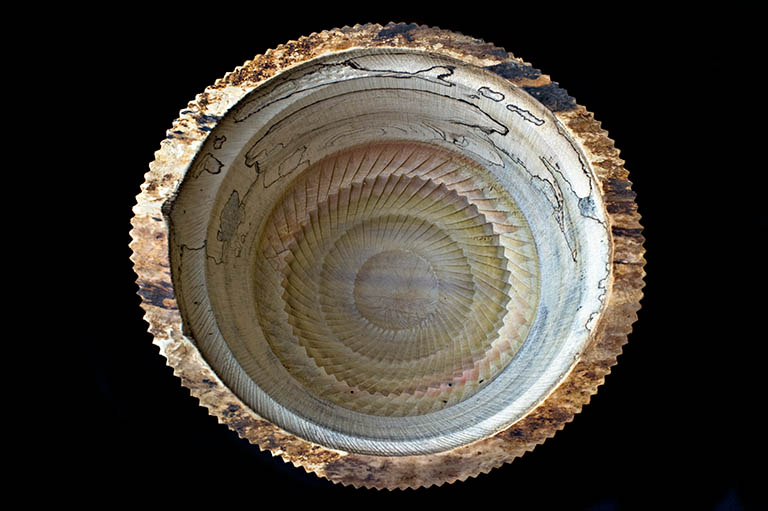
About
the wood:
Thomas Jefferson's Monticello (below) and his Tulip Polar tree on
right,
that was scheduled for removal due to it's hollow interior.
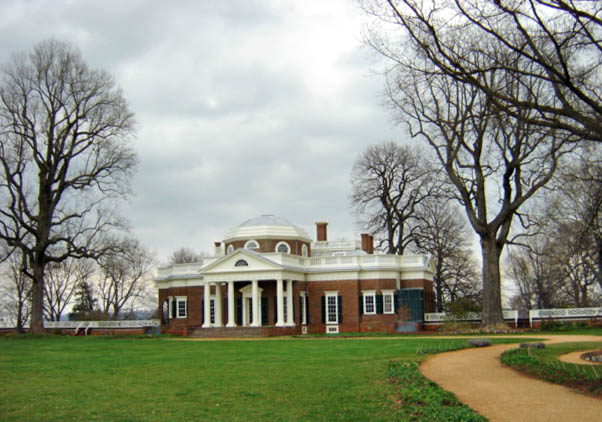
William E. Jewell of Historical Woods of America
sits on the Tulip Poplar stump after removal.
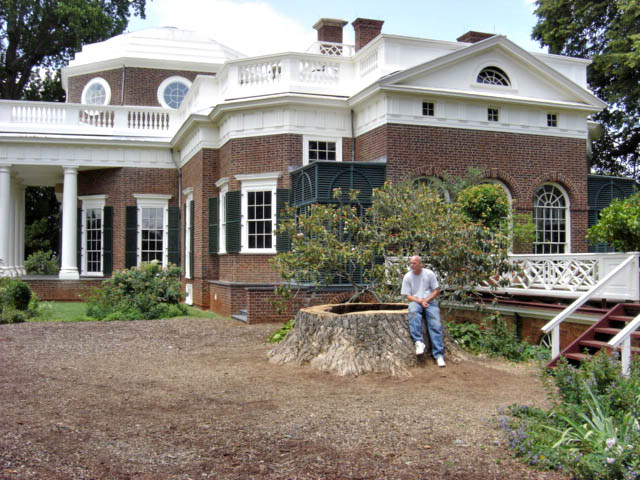
William E. Jewell standing in front of the hollow trunk.
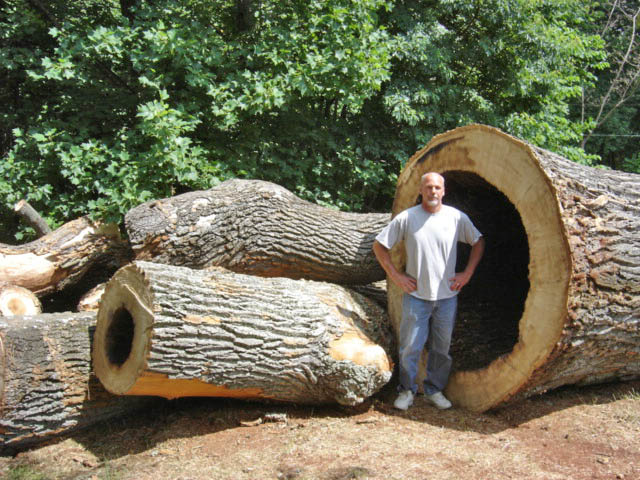
Monticello and Monticello Poplar wood photos courtesy
Historical Woods of America - (used with permission)
See
Monticello Bowl
by Mark Lindquist at:
|
Historical Woods of America
presents:
NATIONAL TREASURES - History in the Making
March 18-21, 2010 Architectural Digest Home Design Show
2010
Co-curators William E. Jewell and Jacques Vesery

(click photo to link to
Historical Woods exhibit info)
|